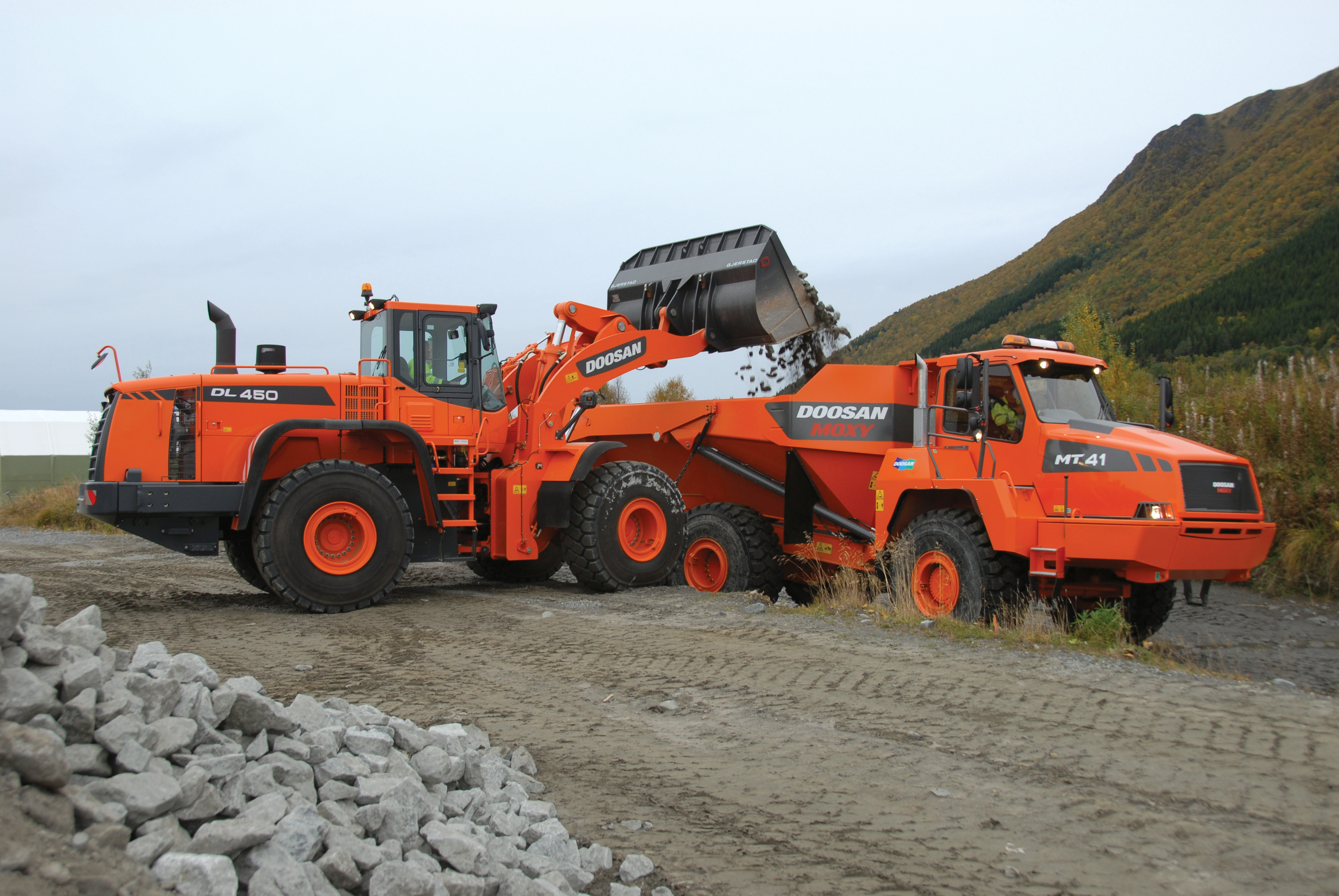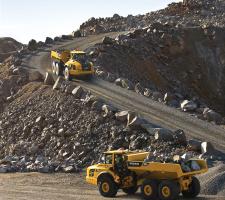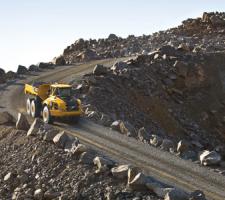
While conveyors offer reduced manpower hauling, trucks give quarry operators flexibility to adapt operations and new technology is adding to these benefits too
The choice of haulers for a quarry is not a straightforward solution - a number of factors need to be taken into consideration to choose between field conveyors, articulated dump trucks or rigid dump trucks. It is not only initial costs and operational costs that need to be considered but the layout of the quarry and haul road condition, lifespan, production levels, size of the loading fleet, primary crusher hopper size and availability of skilled operators are also key factors.
"When customers come to us they already have a site in mind with a specific haul, dump and return cycle so our focus is to find an efficient solution for that route," said
"The other factor that customers need to take into consideration is the lifespan of the site and how the machine needs fit with this. The flexibility of the equipment may need to be considered, especially where a drop in demand may force the quarry operator to reduce its fleet to keep costs down, but if there is a rise in demand the site needs to consider how quickly the fleet can be added to. It also needs to be considered how the fleet can adapt if a machine breaks."
"However, if a quarry site is adapted to the needs of RDTs they can be a cost effective solution." "Each option has benefits and disadvantages," said Ellington. "But there is a right hauling system for every application. With ADTs and RDTs, Cat covers the whole range of machines for hauling. This means we can look at what is the ideal solution for the customer based on cost per tonne.
"The RDT is a durable solution, which can achieve up to 70,000hours with the right maintenance and with a good speed achieved on a haul road can also be very fuel efficient." Caterpillar senior product specialist for articulated trucks Bob Todd said, "ADTs are at home anywhere in the world. They can cope in any weather and are more flexible than RDTs.
"The rigid solution also means that more investment is needed in haul roads and the ancillary equipment to maintain these, which is not an option for some quarry operators.
"The articulated truck is a pioneering machine that can help get the infrastructure going in the early stages of the new operation but once a site is established, then it may be better to haul with a rigid truck." As haul distances increase, the material costs increase too but, according to Ellington, the larger the truck, the lower the costs. But the articulated truck is good when it comes to steep grades and can cope with 30% slopes and poor underfoot conditions. RDTs are better suited to roads with a 15degree or less slope that are well maintained in order for the trucks to reach maximum speeds. According to Ellington, RDTs have the added advantage of having the possibility to be rebuilt two or three times to extend service life as well as different options when it comes to truck bodies and liners to match the application and improve productivity.
"If a site is there for 10 to 15 years and is in hard rock, then RDTs would offer the best cost per tonne," said Ellington. "But if the site has smaller loading tools because of tight spaces on the benches, then ADTs may offer a better solution." Todd added, "An ADT in a rigorous application might achieve 6000 hours of service life but up to 10,000 in an easier application. However, some machines have been partly rebuilt to deliver 50,000hours." "It comes down to how the customer wants to make the investment," said Ellington. "Both availability and initial price have to be factored in as well." Larsson added, "In some situations the flexibility of the solution is a higher priority than the cost."
Developments
One trend that Todd has noticed in the ADT sector is the move towards ejector trucks rather than the conventional lifting body trucks. "The ejector truck can help provide a measured release of material into the crusher, which can reduce wear in the hopper," he said.
"Greater uptake of mobile crushing and screening equipment is also impacting on hauling operations as many quarries use a wheeled loader to load a crusher at the quarry face rather than moving it before processing. This is becoming more common on sites with a shorter operational life." Todd has also played a key role in the development of Cat's new B-series ADTs and he said that all the innovations have been driven by customer demand.
"We carry out global surveys to find out what customers need to meet future demand and one of the things that is becoming clear is that customers want larger ADTs," added Ellington. "This is partly being driven by the mining industry - in Australia there are calls for a 70tonne ADT - but the demand is leading to more models in the 50tonne-class." Volvo also took design input from outside its organisation into account when it came to development of its new ADT range. "One of Volvo's core values is safety and in Europe that is very important in quarries," explained Larsson. "We have worked with the UK's QNJAC committee that sets the standard for safety to ensure our new trucks meet market expectations.
Some of the main developments of the new product line are improved visibility with better sight lines from the cab; more anti-slip surfaces and ground level service points. We have also worked on improved access and egress."
Operator issues
Skills needed to operate a truck may also influence the choice, according to Todd.
"ADTs are easier to use so once an operator has gained experience, then maybe they could move onto driving an RDT," he said.
The difficulty in recruiting skilled operators is another factor that has influenced Volvo's new designs with a focus on ease of operation and automation where ever possible. "This not only makes the machines easier for new drivers to operate but also protects the machine from mis-use," said Larsson.
"The kind of automation that has been introduced includes automatic diff locks as standard and an auto-dump option with safer electro-hydraulic controls." While the choice of RDTs over ADTs may come down to individual site specifics, it is clear that whichever option is selected current innovation is helping to ensure it will deliver efficiency and productivity.
















